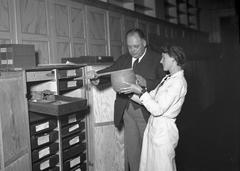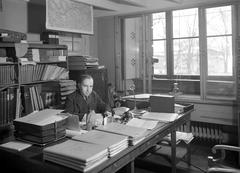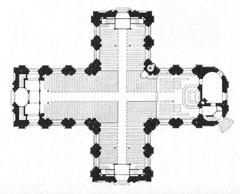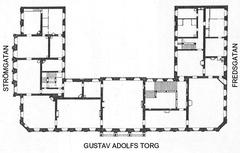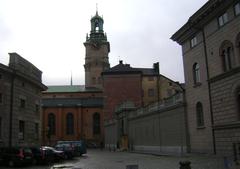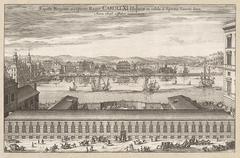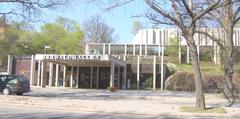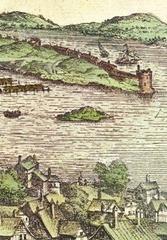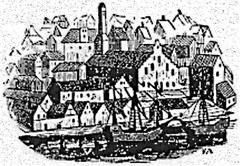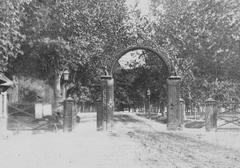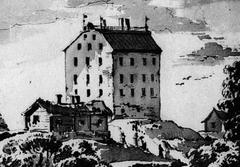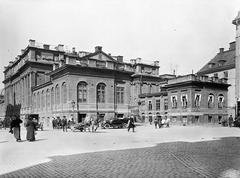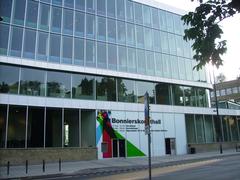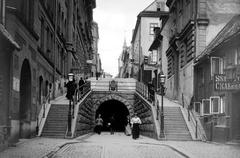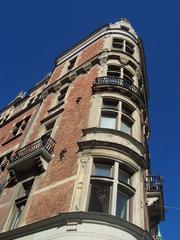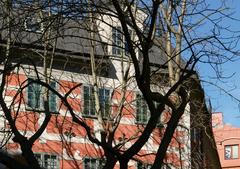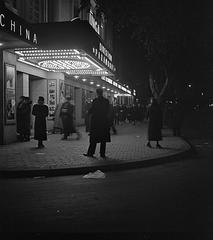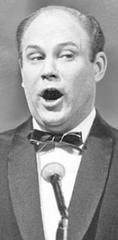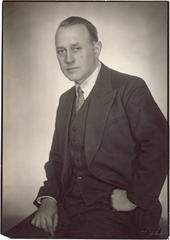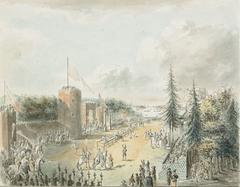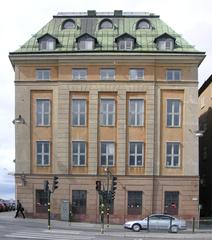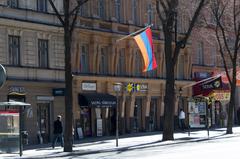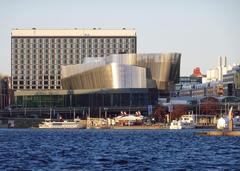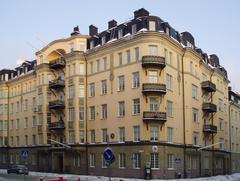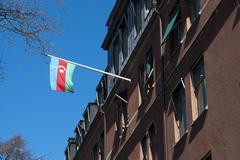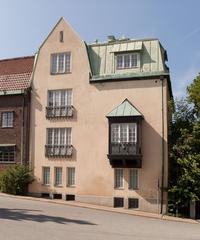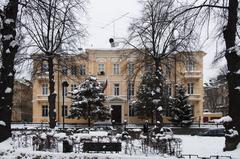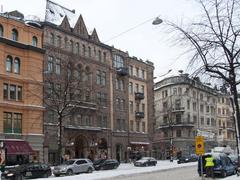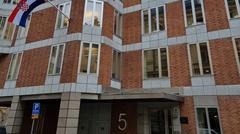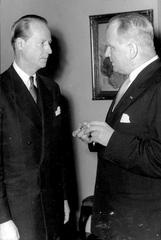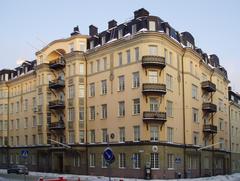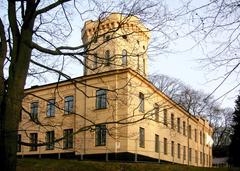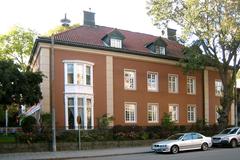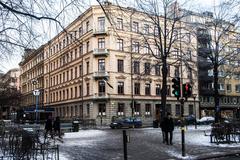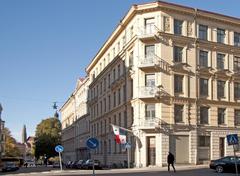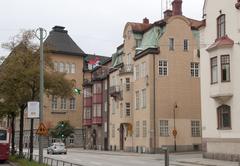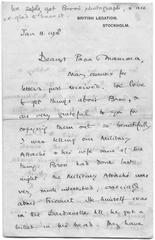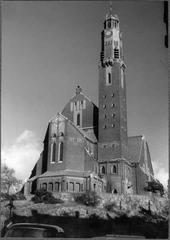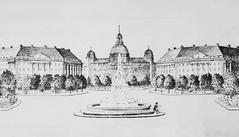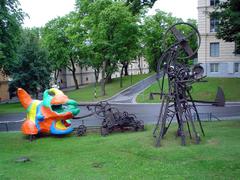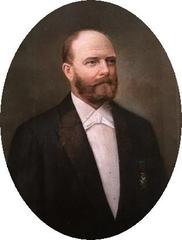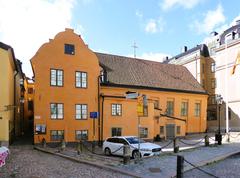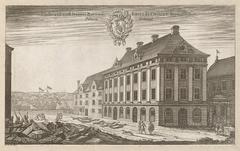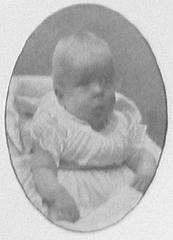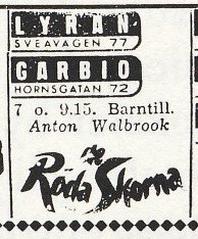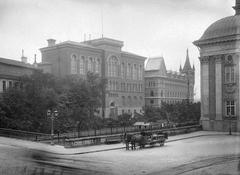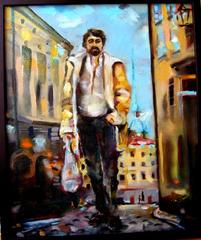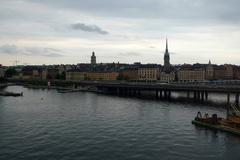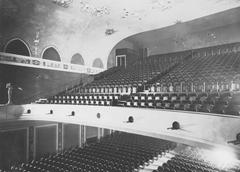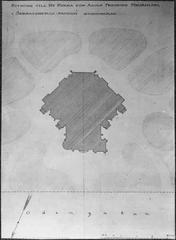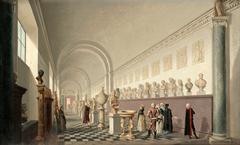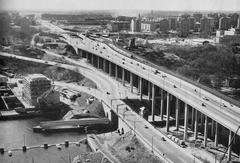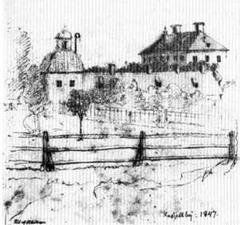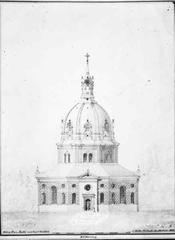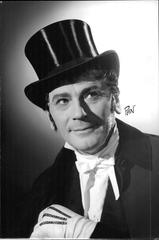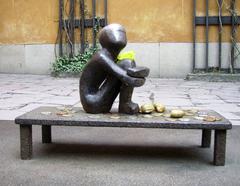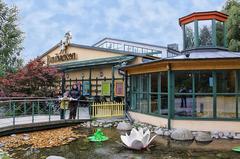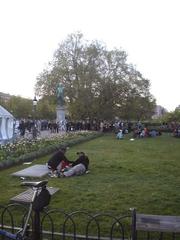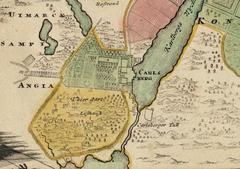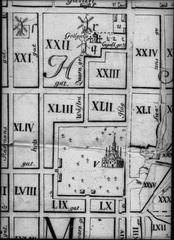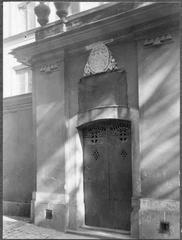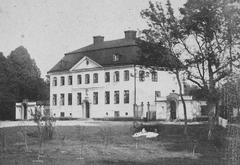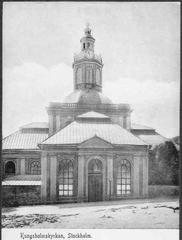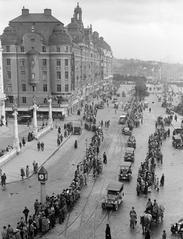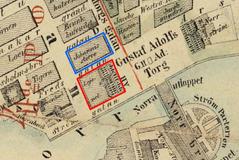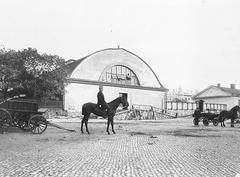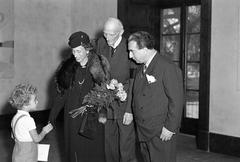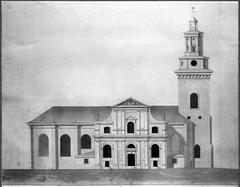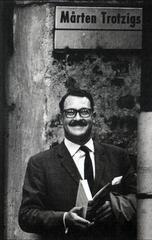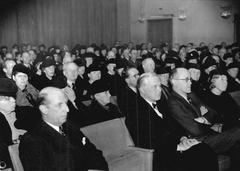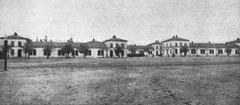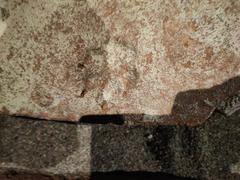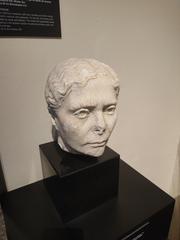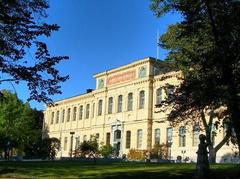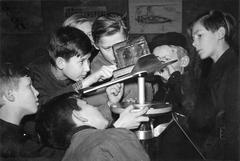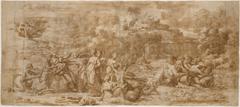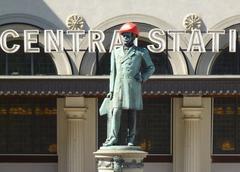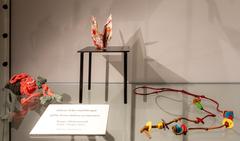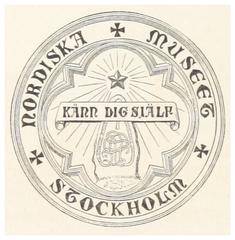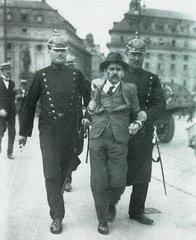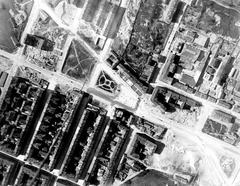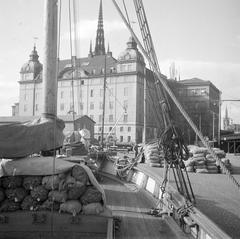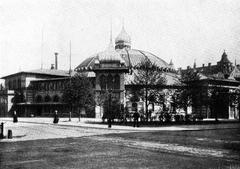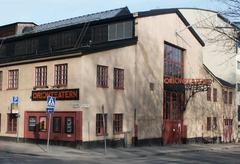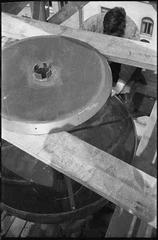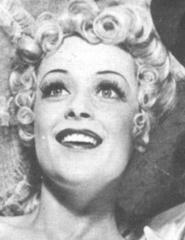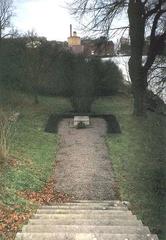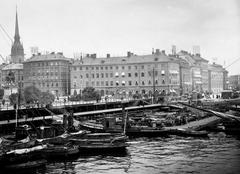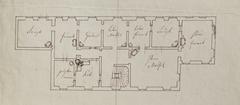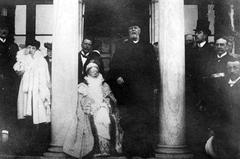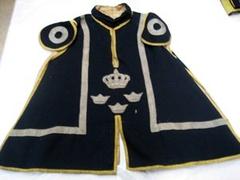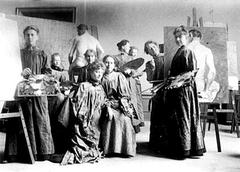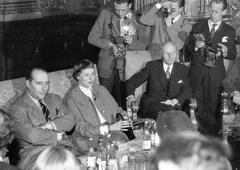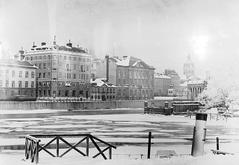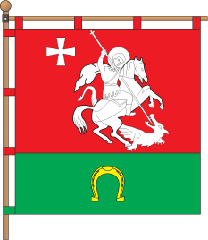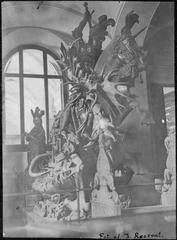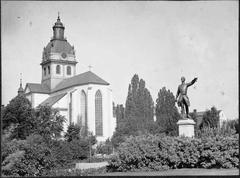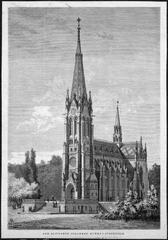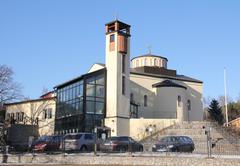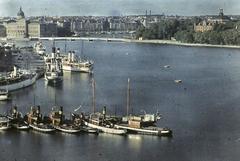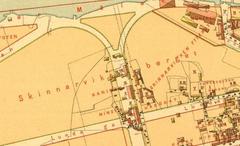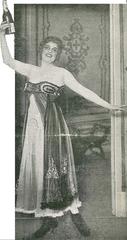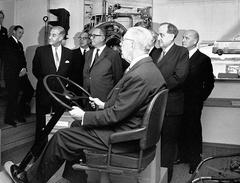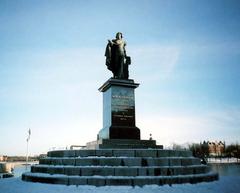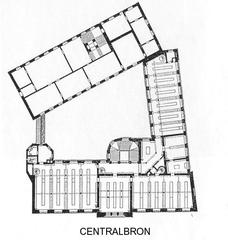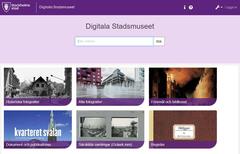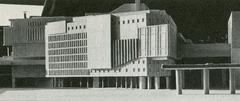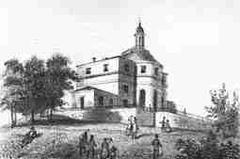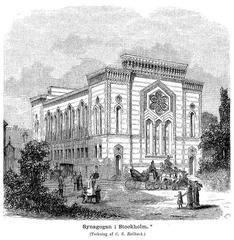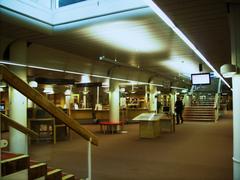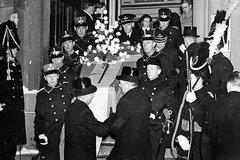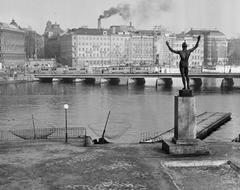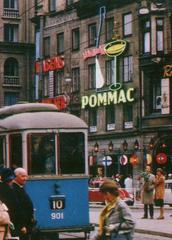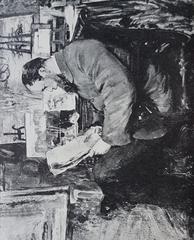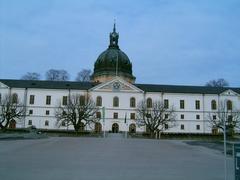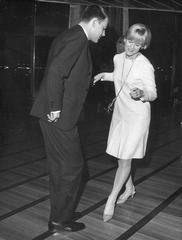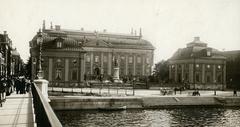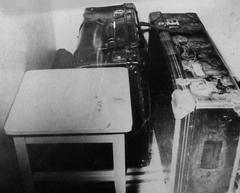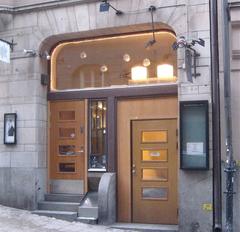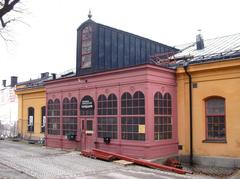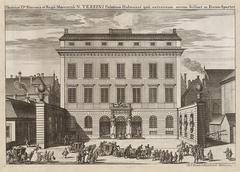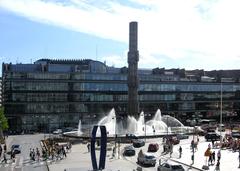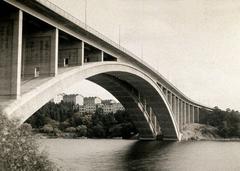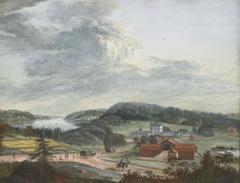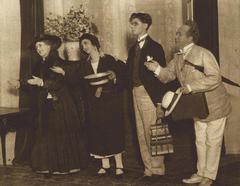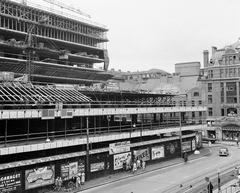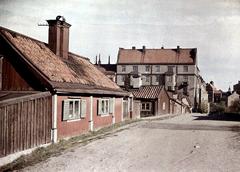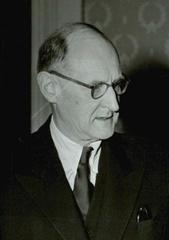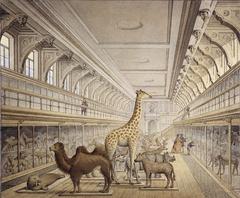
Visiting Historiska Museet in Stockholm: Hours, Tickets, and Tips
Date: 18/07/2024
Introduction
Nestled in the heart of Stockholm, Historiska museet, also known as The Swedish History Museum, offers an immersive journey through Sweden’s extensive past. This museum is not just a repository of ancient artifacts but a vibrant space where history comes to life. Founded on the rich historical collections initiated by King Gustav Vasa in the 16th century, the museum has evolved over centuries to become a leading institution for understanding Swedish identity and heritage. Visitors can explore exhibits ranging from prehistoric treasures to artifacts from the Swedish Empire, making it a must-visit for history enthusiasts and curious travelers alike (historiska.se). This guide provides comprehensive details about the museum’s history, significance, exhibits, visitor information, and nearby attractions, ensuring an enriching experience for all who visit.
Table of Contents
- Introduction
- History and Significance
- Visitor Information
- Exhibits and Collections
- Special Events and Guided Tours
- Photographic Spots
- Nearby Attractions
- Tips for Your Visit
- FAQ
- Conclusion
History and Significance
A Legacy Forged Over Centuries
The Historiska museet, as we know it today, is the culmination of centuries of collecting and safeguarding Swedish history. Its roots can be traced back to the 16th century, with the foundation laid by King Gustav Vasa.
Royal Beginnings and Early Collections (16th - 18th Centuries)
Gustav Vasa, the ruler who led Sweden to independence, was an avid collector of historical artifacts. He saw these objects not just as possessions but as tangible links to the nation’s past. His collection, housed initially at Gripsholm Castle, formed the earliest nucleus of what would become the national historical collection.
Over the following centuries, the collection grew significantly, bolstered by spoils of war, royal donations, and archaeological finds. This period saw the addition of Viking Age treasures, medieval religious art, and objects from Sweden’s expanding global presence.
A Museum Takes Shape (19th Century)
The 19th century marked a turning point. The burgeoning collection, previously scattered across various royal residences, demanded a dedicated space. This led to the establishment of the Royal Museum of National Antiquities in 1819. Housed in what is now the Swedish National Museum, it signaled a growing public interest in history and heritage.
The Birth of Historiska Museet (20th Century Onwards)
The museum we know as Historiska museet was officially inaugurated in 1943. Designed by architect Axel Anderberg, the new building provided a dedicated space for the ever-expanding collection. The building itself, a blend of Renaissance Revival and National Romantic styles, is a historical landmark.
Throughout the 20th and 21st centuries, the museum has continued to evolve. New acquisitions, innovative exhibition techniques, and a focus on engaging diverse audiences have cemented its place as a leading institution for understanding Swedish history.
Significance of Historiska Museet
The Historiska museet holds a unique position in Swedish society. It is not merely a repository of artifacts but a dynamic space where the past is constantly being explored, interpreted, and brought to life.
A Mirror to Swedish Identity
The museum’s collection, spanning from prehistory to the present day, offers a comprehensive picture of Swedish history and its impact on the national identity. From Viking Age raids and medieval religious fervor to the rise of the Swedish Empire and the development of the modern welfare state, the museum presents a multifaceted narrative of the forces that have shaped the nation.
A Center for Research and Education
Beyond its exhibitions, the Historiska museet is a vital center for research and education. Its vast collections, archives, and library serve as invaluable resources for scholars and students. The museum’s educational programs, catering to all ages, foster a deeper understanding of history and its relevance to contemporary society.
A Bridge Between Past and Present
The Historiska museet actively strives to connect the past with the present. Through temporary exhibitions, public programs, and digital initiatives, the museum encourages dialogue and critical reflection on historical events and their lasting impact. It serves as a platform for exploring how the past continues to shape our understanding of the world today.
Visitor Information
Visiting Hours
The museum is open Tuesday to Sunday from 10 AM to 5 PM. During the summer months, it also opens on Mondays. It’s always a good idea to check their official website for any changes in opening hours.
Tickets
Admission to the Historiska museet is free for everyone. However, special exhibitions may require a separate ticket. Information on ticket prices for these exhibitions can be found on the museum’s official website.
Travel Tips
- Getting There: The museum is located in central Stockholm and is easily accessible by public transport. The nearest metro station is Östermalmstorg.
- Accessibility: The museum is wheelchair accessible, with ramps and elevators available for use.
- Facilities: The museum offers free Wi-Fi, a café, and a gift shop where visitors can purchase souvenirs related to Swedish history.
Nearby Attractions
- The Royal Palace: Just a short walk from the museum, the Royal Palace offers a glimpse into the lives of Swedish royalty.
- Vasa Museum: Another must-visit, the Vasa Museum houses the well-preserved 17th-century warship, Vasa.
- Gamla Stan: The old town of Stockholm, with its narrow streets and historic buildings, is perfect for a leisurely stroll.
Exhibits and Collections
The Historiska museet boasts a captivating journey through Swedish history, from prehistory to the present day. The museum’s vast collection is displayed across several permanent exhibitions, each offering a unique glimpse into Sweden’s past.
The Gold Room
Prepare to be dazzled by The Gold Room, home to the most significant collection of prehistoric gold artifacts in Sweden. Over 3,000 glittering objects, including necklaces, bracelets, and ceremonial items, tell the story of wealth and ritual in the Bronze and Iron Ages. The intricate craftsmanship and sheer volume of gold offer a fascinating look at the lives and beliefs of Sweden’s early inhabitants.
The Viking Age
Delve into the legendary world of the Vikings in this immersive exhibition. Explore the myths and realities of Viking life through authentic artifacts like swords, helmets, and jewelry. Discover their seafaring prowess, trading networks, and the impact of their raids on European history. The highlight of this exhibition is the well-preserved Viking Age boat, offering a tangible connection to these skilled navigators.
The Middle Ages
Journey through the Middle Ages and witness the birth of modern Sweden. This exhibition showcases the transition from paganism to Christianity, the rise of powerful kingdoms, and the development of urban life. Explore religious art, weaponry, and everyday objects that shed light on the social and political landscape of this era.
The Swedish Empire
Step back into the 17th and 18th centuries, a time when Sweden emerged as a major European power. This exhibition explores the Swedish Empire’s rise and fall, its military campaigns, and its cultural achievements. Discover portraits of powerful monarchs, intricate tapestries, and exquisite silverware that reflect the opulence and ambition of this period.
1800s - A New Time
The 19th century brought significant changes to Sweden, marked by industrialization, social reforms, and the rise of a national identity. This exhibition explores these transformations through everyday objects, furniture, and clothing. Learn about the lives of ordinary people, the challenges they faced, and the cultural shifts that shaped modern Swedish society.
The History of Childhood
This unique exhibition offers a nostalgic and thought-provoking look at childhood through the ages. Explore toys, games, clothing, and other objects that illustrate how children lived, played, and learned in different eras. The exhibition provides a fascinating perspective on changing societal norms and the evolving understanding of childhood.
Temporary Exhibitions
In addition to its permanent collections, the Historiska museet hosts a dynamic program of temporary exhibitions throughout the year. These exhibitions cover a wide range of historical and cultural themes, often featuring international collaborations and cutting-edge research. Be sure to check the museum’s website for the latest offerings.
Special Events and Guided Tours
The museum regularly hosts special events, including lectures, workshops, and family-friendly activities. Guided tours are available in multiple languages and offer deep dives into specific aspects of the collection. Check the museum’s website for the latest schedule and booking information.
Photographic Spots
Historiska museet is not only rich in history but also offers several photographic spots, including the stunning Renaissance Revival architecture of the building itself and the beautifully curated exhibits inside. Don’t forget to capture these moments during your visit.
Tips for Your Visit
- Allocate sufficient time: The museum’s vast collection warrants several hours of exploration. Plan your visit accordingly to fully immerse yourself in the exhibits.
- Free admission: Enjoy free admission to the Historiska museet’s permanent exhibitions, making it an accessible attraction for all.
- Guided tours: Enhance your experience by joining a guided tour, available in multiple languages, to gain deeper insights into the exhibits.
- Audio guides: Rent an audio guide for a self-paced exploration, offering detailed commentary on selected artifacts and exhibitions.
- Family-friendly: The museum offers interactive displays and activities specifically designed for children, making it an engaging destination for families.
- Accessibility: The Historiska museet is accessible to visitors with disabilities, with ramps, elevators, and accessible restrooms available.
FAQ
Q: What are the visiting hours of Historiska museet? A: The museum is open Tuesday to Sunday from 10 AM to 5 PM. During the summer months, it also opens on Mondays.
Q: Is there an admission fee? A: Admission to the museum is free, but special exhibitions may require a separate ticket.
Q: How can I get to the museum? A: The museum is located in central Stockholm and is easily accessible by public transport. The nearest metro station is Östermalmstorg.
Q: Are there guided tours available? A: Yes, guided tours are available in multiple languages. Check the museum’s website for booking information.
Q: Is the museum wheelchair accessible? A: Yes, the museum is wheelchair accessible, with ramps and elevators.
Q: What nearby attractions can I visit? A: Nearby attractions include the Royal Palace, Vasa Museum, and Gamla Stan.
Conclusion
The Historiska museet in Stockholm is more than just a museum; it’s a gateway to understanding Sweden’s rich and diverse history. From the dazzling Gold Room to the immersive Viking Age exhibit, each section of the museum offers a unique glimpse into the nation’s past. The museum’s commitment to accessibility, educational programs, and interactive displays makes it an engaging destination for visitors of all ages. Whether you’re exploring the permanent collections or attending a special event, Historiska museet promises an enriching and unforgettable experience. Be sure to check the museum’s official website for the latest updates on exhibitions and events, and consider combining your visit with nearby attractions like the Royal Palace and the Vasa Museum for a comprehensive cultural journey through Stockholm (historiska.se).
References
- Visiting Historiska Museet - History, Significance, Tickets, and More, 2024, Swedish History Museum historiska.se
- Visiting Historiska Museet in Stockholm - Exhibits, Tickets, and Tips, 2024, Swedish History Museum historiska.se
- Visiting Historiska Museet - Hours, Tickets, and Tips for Exploring Stockholm’s Historical Museum, 2024, Swedish History Museum historiska.se

